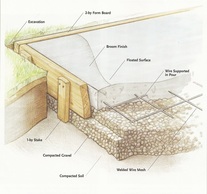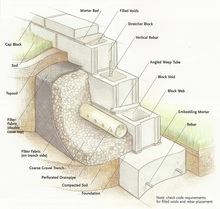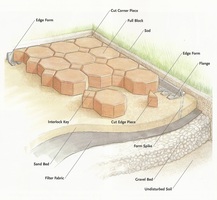Curious about how your masonry project was created?
These diagrams show the steps that we take in completing your project as well as some general knowledge of the trade.
These diagrams show the steps that we take in completing your project as well as some general knowledge of the trade.
Types of Stone Walls
Dry-Laid Retaining WallsDry Laid Retaining Walls are used to hold back steep slopes anywhere on the property. They can be used to turn an area with a downhill grade that prohibits use for outdoor activities into level areas that can be used for outdoor recreation.
A good amount of soil can be held back by dry stacking stone through which water will seep during heavy rains. |
Dry-Laid Stone Walls Dry-laid stone walls are used for garden and knee walls. This type of wall is mainly for decorative purposes and does not pose the strength and durability of a retaining wall. They are laid on compacted earth and no mortar is used between the wall stones. An expert knows how to fit the stones together to create just the right look and sturdiest balance. These walls are your best option for using quality materials with an inexpensive lay process
|
Mortar-Laid Stone Wall Nothing beats traditional mortar-laid stone for longevity, looks, style and strength. Starting three-feet below ground, mortar-laid, or wet-laid, stone is multi-layered process that ensures a lasting structure.
With the concrete footing below ground level and mortar between the stones, this type of wall is used where strength is needed. These walls are typically built as house foundations, privacy walls and driveway runners. |








